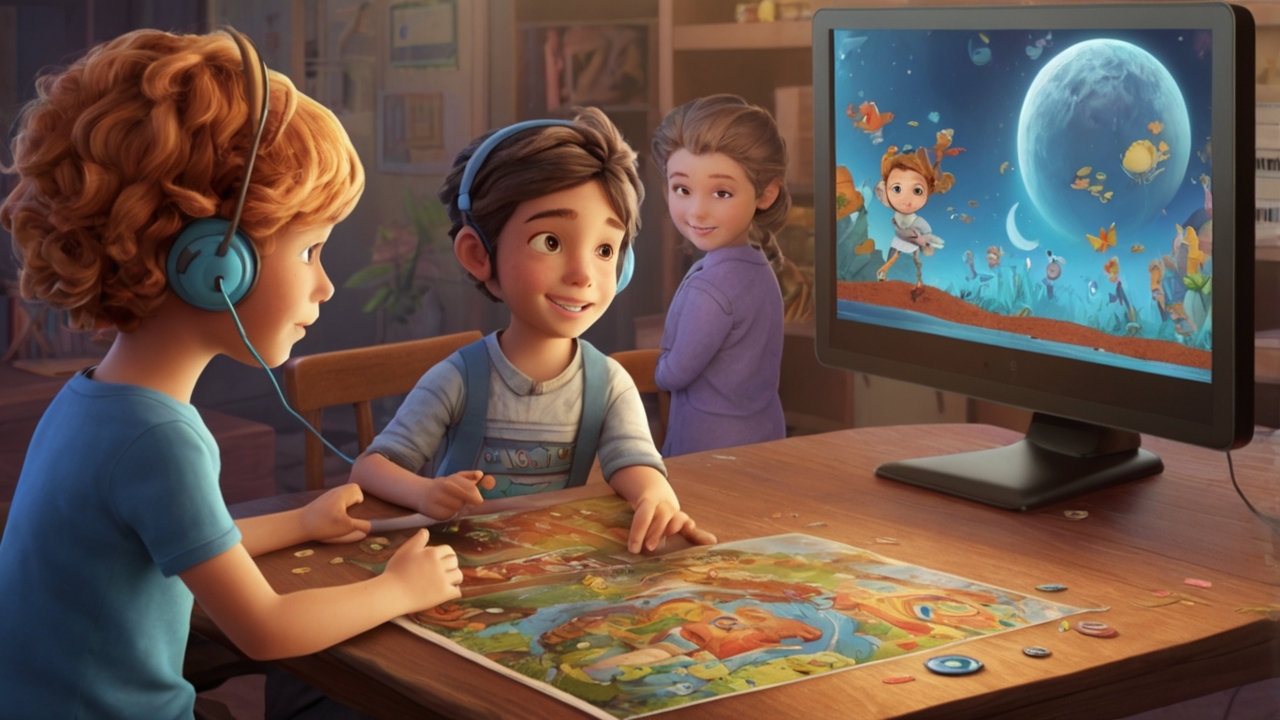Round Rock Journal – Interactive media has become an essential tool in modern education, especially for children. Unlike traditional methods that rely heavily on textbooks and memorization, interactive media creates a learning environment that encourages participation and engagement. By combining visuals, sounds, and hands-on activities, children experience education in a more dynamic way. This makes lessons easier to understand and more enjoyable. Moreover, interactive media adapts to different learning styles, whether visual, auditory, or kinesthetic. Children are naturally curious, and when lessons become playful through digital games, videos, or animations, their motivation to learn increases significantly. Therefore, integrating interactive media into light education is not only innovative but also effective in shaping children’s learning experiences. It ensures that education becomes an activity they look forward to rather than something they resist.
“Also read: Biometric Visual Art: Dynamic Art from Body Data“
Why Interactive Media Matters for Kids
The importance of interactive media lies in its ability to connect with children on their level. Kids today are digital natives who grow up surrounded by technology. Expecting them to thrive in traditional classroom settings without digital integration can lead to disengagement. Interactive media bridges this gap by bringing education closer to their daily experiences. For example, children can learn science concepts through animated experiments or improve their reading skills with interactive storybooks. These tools make learning both relevant and enjoyable. In addition, interactive media provides immediate feedback, helping children recognize mistakes and correct them quickly. This creates a sense of achievement that fuels motivation. As a result, interactive media doesn’t just make learning fun—it makes it personal and impactful, giving children a stronger foundation for lifelong education.
Benefits of Light Education Through Interactive Tools
Light education refers to methods that focus on making learning simple, engaging, and less intimidating. When combined with interactive media, the benefits multiply. For instance, complex topics such as mathematics or environmental science can be presented through colorful visuals and simple activities that children find approachable. This reduces anxiety and builds confidence in tackling challenging subjects. Additionally, interactive media fosters creativity and imagination. Children can explore, experiment, and learn at their own pace without feeling pressured. The flexibility of interactive tools also means lessons can be tailored to different age groups or individual skill levels. This makes education more inclusive and effective. By presenting knowledge in light, digestible formats, interactive media helps children absorb information naturally while nurturing curiosity and self-expression.
How Interactive Media Encourages Active Participation
Traditional education often positions children as passive recipients of knowledge. Interactive media changes this dynamic by turning them into active participants. For example, educational games require children to solve problems, make decisions, and interact with the content. This sense of control keeps them engaged and invested in the learning process. Moreover, interactive platforms often include rewards and progress tracking, which motivate children to keep learning. Unlike static lessons, interactive media invites children to ask questions and explore multiple solutions. This nurtures critical thinking and problem-solving skills that are vital for their development. In essence, interactive media ensures that children are not just listening or watching but actively doing, which enhances both comprehension and retention.
The Role of Interactive Storytelling
Storytelling has always been a powerful way to teach children values, knowledge, and skills. Interactive media elevates storytelling by making it immersive and participatory. Instead of simply listening to a story, children can now engage with characters, make choices, and influence the outcome. For example, an interactive storybook might allow a child to decide how a character solves a problem, leading to different endings. This form of storytelling teaches responsibility, creativity, and empathy in ways that static stories cannot. It also strengthens literacy by encouraging children to read more actively. Through interactive storytelling, children learn that education is not about memorizing facts but about exploring narratives, understanding perspectives, and building imagination. This makes learning deeply personal and unforgettable.
“Read more: Understanding the Impact of Self-Confidence on Personal Growth“
The Connection Between Play and Learning
Play has always been a central part of childhood, and interactive media harnesses this natural instinct. Games, simulations, and playful learning apps are designed to teach while entertaining. For example, a math game that uses puzzles and rewards can make arithmetic enjoyable instead of stressful. Similarly, interactive science experiments in digital labs allow children to test ideas without real-world risks. This fusion of play and learning makes knowledge easier to internalize because it aligns with how children naturally learn best. It also keeps their attention longer, reducing boredom and frustration. By turning education into play, interactive media ensures that children build positive associations with learning. As a result, they are more likely to remain curious and motivated as they grow.
Preparing Kids for the Future with Interactive Media
In today’s fast-changing world, children need skills beyond reading and arithmetic. They must be adaptable, creative, and technologically literate. Interactive media plays a crucial role in preparing them for this future. By engaging with digital platforms, children gain familiarity with technology while developing critical thinking and problem-solving abilities. For example, coding games introduce them to logical reasoning, while interactive teamwork platforms teach collaboration. These skills are not only useful in school but also essential in future careers. By making education light, engaging, and tech-driven, interactive media equips children with the mindset and tools they will need in adulthood. It prepares them for a world where learning never stops and adaptability is key to success.


